Classical Dress c. 1794 - 1810
In England the term Regency strictly refers to the period 1811 - 1820 when George, Prince of Wales was regent for his sick father King George III. However the term has come to be used as shorthand for the Classical period from 1800 - 1820.
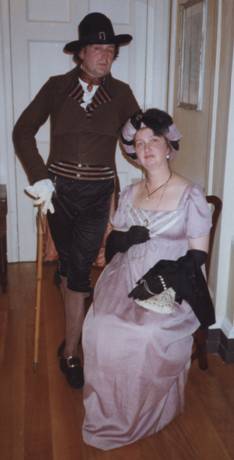 Following the lighter fabrics and simpler styles of the 1780's gowns like these became fashionable in the 1790's.
Following the lighter fabrics and simpler styles of the 1780's gowns like these became fashionable in the 1790's.
At first the silhouette of Classical dress is high waisted but bulky, with skirts gathered to the bodice evenly all round.
By about 1800 the line has become narrower with the front skirt cut to be flat over the abdomen but still with fullness over the hips and behind. The effect is of a long slim body, rather like a column, above which the head and arms are displayed. Gradually gored panels replaced the soft fullness in the skirt.
Now skirts flare out smoothly from the waist in an A line, any remaining fullness being concentrated at the centre back. Most ladies continued to wear stays but some ladies discarded them and the gowns themselves were made to provide the necessary support. All the gowns on this page are worn without stays or corsets.
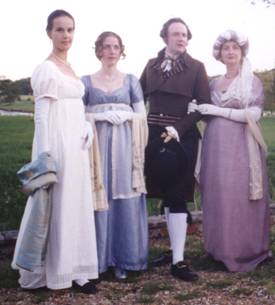 Stomacher Front Gowns c. 1800 - 10
Stomacher Front Gowns c. 1800 - 10
Stomacher front gowns are made to fasten in the apron style, with the front skirt tying round the waist and an attached flap pinning or buttoning over the bosom.
The ladies pictured here have danced all evening at Balls on numerous occasions without any of their pins becoming dislodged or injury to their persons.
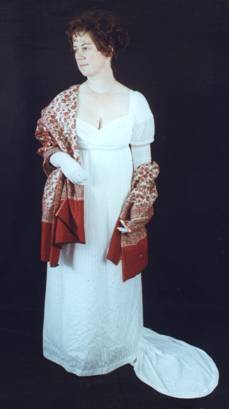 This dress could have been worn as a formal day dress or as an evening dress. For day wear it could have been worn over a chemisette to fill in the neckline.
This dress could have been worn as a formal day dress or as an evening dress. For day wear it could have been worn over a chemisette to fill in the neckline.
White was a fashionable colour in this period and implied a certain level of wealth because of the work involved in keeping clothes pristine. Colourful shawls were a luxury item imported from India but were very quickly copied by weavers in cities such as Norwich, Paisley and Edinburgh.
The lower classes were not expected to follow fashion too closely and imitate their betters. Ladies would wear a printed cotton gown in the morning but change before receiving visitors or going out. Servants and working women were expected to wear printed gowns at all times since they would not show the dirt so quickly.
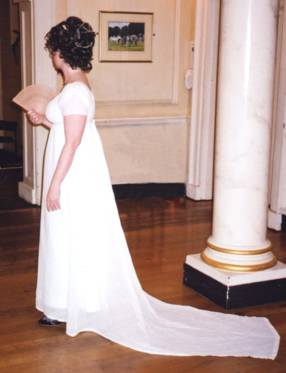
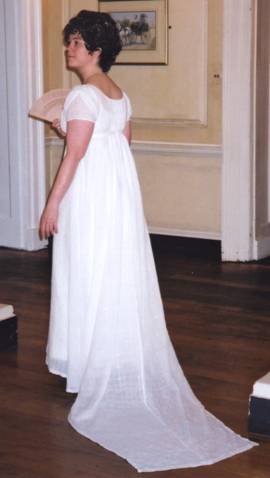
A Frock c. 1805 - 10
After 1800 another style of dress fastening started to gain in popularity. This was the frock or back fastening gown.
Often only drawstrings at the waist and neck served to fasten the gown, fullness in the bodice concealing the opening.
This frock is made in muslin woven with a windowpane check. At every other intersection of the pattern a 3mm silver spangle has been sewn. To date approximately 3,500 spangles have been individually attached. After about 1806 trains cease to be fashionable for day wear making this a very rich and formal dress suitable for evening wear. Exactly how ladies managed their trains when dancing is not known.
Jane Austen, in Northanger Abbey (1798/99) mentions how Isabella Thorpe and Catherine Morland 'pinned up each other's train for the dance'. It would have been impolite for the train to be pinned to show the dirty underside so when the dresses on this page have been worn for balls the trains have been folded up inside the skirt and pinned into place.
